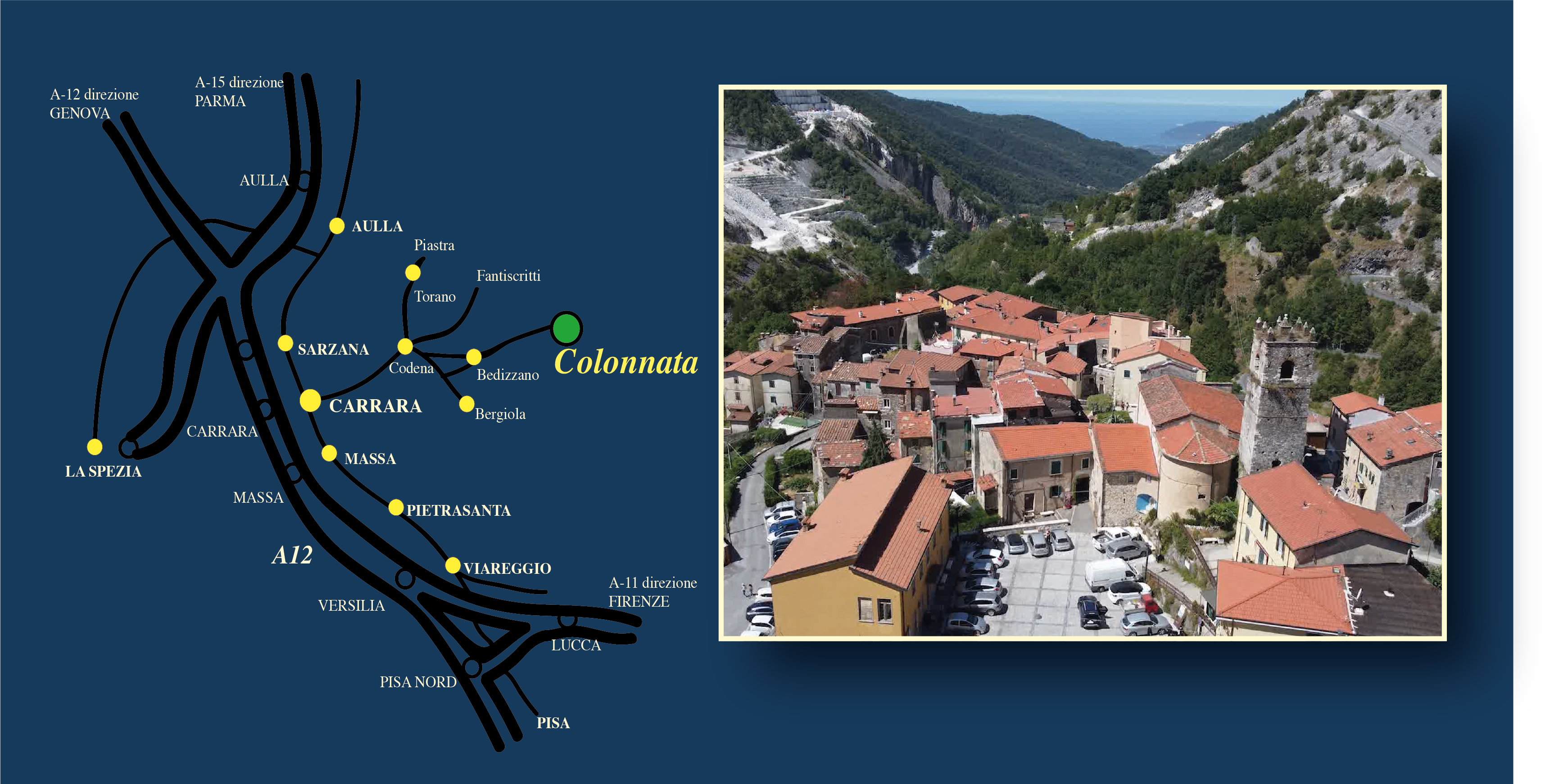100% NATURAL

Colonnata is not the centre of the breeding of pigs. The supply is at the discretion of the producers, the quest for the best, they play all over the field. The pigs are almost all from Emilia and from Veneto, Piedmont and Tuscany. But as a prerogative of goodness and uniqueness will never have his lard, and where you differ from another? Without having tasted it will be hard to give an answer. And it is certain that immediately after the approach of the lard fall between the whims favorites of the most skeptical of tasters. The colonnatesi are masters of preparing it. The procedure is similar to that of many other localities, but in most there are two fundamental components, one of which cannot be found from other parts: the microclimate then the marble, which must be one of the Gullies of Colonnata, which does not absorb and is not an exudate due to its very fine grain which makes it features shop windows almost of granite. In fact, the natural humidity of the caves and the marble walls of the basin, establish the natural conditions for ripening. The chemical analysis and bacteriological showed that the “method”, old, it is extraordinarily effective and does not require the use of any chemicals nor preservatives for storage. Will own the air you breathe in Colonnata, the humidity of the caves, the microorganisms that are inside of the cave. The fact is that the lard of the pork seasoned in this country presents different characteristics from all the others. The combined action of the factors described above, in addition to a wise aromatization, allows the lard to soften and take on flavors and aromas are particularly intense and pleasant. In the course of the months must be controlled with care, because it does not present the anomalies and arrive at maturity in a perfect state of preservation. That's why the color becomes white, almost pinkish, and cut thin, almost transparent in its veins. Must be consumed with the natural, laid on slices of bread toasted in the oven. Also those who suffer from eating disorders and have to stay in the diet can eat the bacon because contrary to what you might think, the cholesterol content is almost non-existent*.
The real lardo di Colonnata only from Colonnata
Here are the reasons that differentiate it from other
First : the weather. Colonnata, 550 meters above sea level, nestled between marble quarries and chestnut woods, is characterized by a microclimate ideal for the long maturation of the product (a minimum of six months, but even two years or more) that takes place in marble basins (basins) at natural temperature (without forced conditioning). Mainly for this reason, only the lard worked in Colonnata is the true and only lard. Second : marble. Mature in its walls live, breathe, or use containers, aggregates, steel, or worse, plastic is definitely not the same thing. Then not all marble is the same: you must know how to choose the right one, i.e. that of the fine-grained in the basin of the Valleys of the Colonnata. Third : the production is seasonal (September to may). Fourth: the extraordinary variety of local aromatic herbs and spices (no additive, preservative, flavouring is permitted). Finally we have the processing technique of all, Colonnata, have inherited a recipe, at least a basin, and the knowledge of a technique that has remained for centuries the same. We start from the basic raw material, the fat of the pork, today purchased mostly in selected dairy farms of central and northern Italy. It takes a great cut, you scrape off the lard and cut into the block from the side on a regular basis. Then rub with sea salt.
* taken from: the Chemical, Nutritional And Oxidation State Of the Lard Of Colonnata. of Palagi, Anna Francesca Agricultural Science And Technology, 2011, Pisa University – “ The lard used in the experiment was produced according to the disciplinary production of PGI “Lardo di Colonnata”. As a raw material (backfat) is used as the layer of fat is the backbone of the pig breed Large White and Cinta Senese pigs. The analysis was continued for a year and has involved samples of lard taken at 0 (BF), 90 (L-1), 180 (L-2), 270 (L-3), 360 (L-4) days of curing. In these samples you have analysed the fatty acid composition of the triglycerides and the free fatty acid, separated by solid phase extraction (SPE). The cholesterol content was assessed by quantification of silylated derivatives by GC after saponification and cold of the sample. The oxidation of fatty acids was evaluated through the quantification of the substances reactive to acid tiobarbiturico (TBARs), while for the oxidation of cholesterol were separated, and quantified the COPs, that is, the products of its oxidation, after removing from the unsaponifiable fraction: the excess cholesterol, through SPE... The production technique based on the disciplinary “Lardo di Colonnata”, with the ageing process, stops the lipid peroxidation, and a decrease in the value of TBARs and the content of COPs (the oxidation of cholesterol, Cholesterol Oxidation Products)”.

